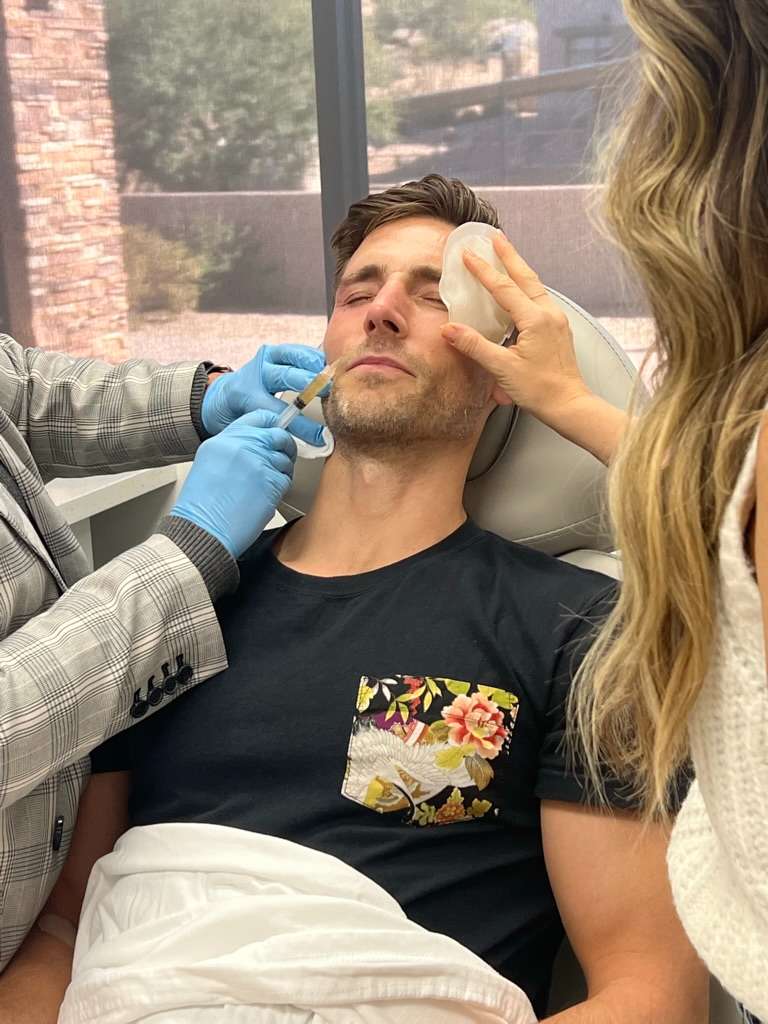Of note, R3 Stem Cell does NOT use embryonic stem cells. Rather, R3 uses mesenchymal or hematopoietic stem cells. They work well and are very safe.
The 1st set of treatments were performed in 2016 for 8 weeks in New Delhi, India; the 2nd set of treatments were for 4 weeks six months later, and the last set of treatments were over two weeks, six months after that. These were given through multiple routes, primarily IM and IV, although several were given through the cervical intrathecal route.
After the stem cell therapy, the patient has clinically stabilized with fewer sinus infections and his IgG immunoglobulin levels and subclasses have remained within normal limits. The patient’s Lyme disease symptoms also improved. He no longer complained of significant fatigue or insomnia and only required low-dose Adderall for his ADHD (5 mg/day) to help him concentrate at school.
There remained only mild neck and back pain, but it was positional, with no other associated joint pain or neuropathy. Recent testing for Lyme disease showed decreased Borrelia-specific bands on the Western blot (31 kDA, i.e., Osp A, as well as a decrease in the 39 kDA band) with negative whole blood PCRs.
He remained clinically stable without relapses while off all antibiotics and only required a seven-day course of a cephalosporin for a sinus infection during his first year of college. Previously, he had suffered from an average of 10–15 infections per year, despite being on monthly IVIG. By the end of follow up, he was at a high level of normal functioning.
A 2018 study out of India included 59 patients with Lyme disease whose single-photon emission tomography imaging was performed before and after human embryonic stem cell therapy. The Single-photon emission tomography imaging was used to assess the hypoperfused lesions/regions in the brain prior to the therapy, as well as the improvement in perfusion after human embryonic stem cell treatment.
The author noted that patients with LD usually suffer from poor circulation in brain regions affecting memory and cognition, with an overflow in the occipital lobe. This might be the cause of poor concentration, cognitive disabilities and highly sensitive eyes in LD patients.
Of note, R3 Stem Cell does NOT use embryonic stem cells. R3 uses mesenchymal and hematopoietic stem cells obtained from ethical sources. The SPECT imaging was performed for all the patients, before and after the treatment. A clear and noticeable improvement was observed and reported after comparing the reports of SPECT imaging before and after the therapy. Patients with significant improvement showed more than 60% improvement. The clinical improvement was based on the brain perfusion state of patients. After comparing the SPECT imaging results of prior and after therapy, it was observed that the patients showed an improvement. They were observed with severe/moderate/mild brain hypoperfusions prior to therapy. After receiving stem cell therapy, their perfusion level upgraded to moderate/mild/minimal and even normal perfusion levels.
Another study performed by Shroff in 2016 evaluated a patient with diagnoses of Lyme Disease and Multiple Sclerosis (MS). Globally, MS prevalence parallels the circulation of the Lyme disease (LD), which is characterized by white matter lesions in the brain similar to those found in MS patients.
In the study, a 30-year-old female presented with chief complaints of inability to walk, wheel chair dependence, unable to stand without support, spasticity of lower limbs with foot drop on the left foot, weakness of the left arm and spasticity of the left hand, severe fatigue with myalgia, and joint pains especially in the shoulder (left >right). After further deterioration of her condition, she was tested and found positive for LD in 2012. She was prescribed an antibiotic regime without much beneficial results.
The patient received stem cell therapy along with antibiotics and physiotherapy. The treatment period for the patient included six months and was poorly described in the paper. Following the first treatment phase, the patient reported remarkable improvement in her lower limb strength, decreased spasticity, and had no longer fatigue issues. Also, she was able to walk upright now with support.
After her second visit, improvement in muscle strength, movement of left upper arm, spasticity of left lower, and left upper limb was observed. The patient was able to walk independently for up to 40–50 minutes around the room. An improvement was observed in parameters like muscle weakness, walking distance, balance, fatigue, pain, blurring of eyes, and deformity.












































